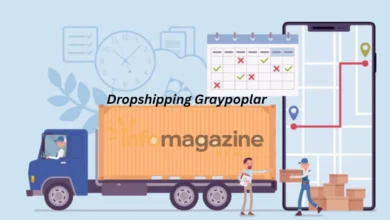How Video Dubbing is Changing the Landscape of Educational Content Distribution

The rise of digital platforms has transformed the way we access educational content. From online courses and tutorials to video lectures and virtual classrooms, the accessibility of learning materials has never been more widespread. However, one of the biggest barriers to global reach in educational content is language. To truly make learning accessible to a worldwide audience, it’s essential to overcome language barriers. This is where video dubbing is playing a pivotal role.
Video dubbing, the process of replacing the original audio track of a video with one in a different language, is becoming increasingly popular in educational content distribution. With the advancement of artificial intelligence (AI) and machine learning, video dubbing has evolved significantly. Now, creators can easily localize their videos for different languages, reaching a much larger and more diverse audience.
This article explores how video dubbing is revolutionizing the distribution of educational content, enabling educators and content creators to break down language barriers, enhance engagement, and foster a more inclusive learning environment.
Breaking Down Language Barriers with Video Dubbing
Traditionally, educational videos were often limited to audiences who spoke the language of the content. However, this restricted the accessibility of learning materials to a global audience. With video dubbing, educational content creators now have the ability to translate their videos into multiple languages, allowing them to cater to viewers around the world.
Video dubbing powered by AI makes it possible to automatically translate and dub content with incredible accuracy. These AI tools analyze the video’s dialogue, tone, and pacing to create a dubbed version that sounds as natural as possible. Not only does this make the content accessible in various languages, but it also ensures that viewers can understand the material without losing the nuances and context of the original video.
For instance, an educational tutorial on mathematics, programming, or history can now be dubbed into several languages, allowing students from different parts of the world to benefit from the same high-quality content. This significantly enhances the learning experience by making it more relevant to a diverse audience.
Additionally, the availability of video apps for Android enables educators to dub and distribute content directly from their mobile devices, creating a more flexible learning environment. With just a smartphone, creators can easily localize their content and distribute it on platforms like YouTube, making education more accessible than ever before.
Improved Engagement and Retention Rates
Video dubbing is not only about breaking language barriers; it’s also about enhancing the engagement and retention of learners. Research has shown that learners are more likely to engage with content that is in their native language or one they are comfortable with. By offering dubbed videos, educators can ensure that their audience is more engaged and focused on the material, rather than struggling with language comprehension.
When students watch educational videos in their preferred language, they can better absorb the information being presented. This is particularly important for complex subjects, where understanding the nuances of the language is crucial. Whether it’s a biology lecture explaining intricate processes or a language lesson teaching grammar and vocabulary, dubbing in the learner’s language can significantly improve comprehension and retention.
By using AI-powered video dubbing tools, educators can ensure that the dubbed version is synchronized with the original video, maintaining the pacing and timing of the lesson. This makes it easier for students to follow along with the material without losing focus or feeling distracted by mismatched audio.
Additionally, AI tools allow for multiple voice options and accent choices, enabling educators to select the voice that best fits their target audience. This level of customization can lead to even greater engagement, as students may feel more connected to the content when it’s delivered in a familiar tone or accent.
Enhancing Inclusivity in Education
The democratization of education is one of the most significant benefits of video dubbing. By making educational videos available in multiple languages, educators and content creators can ensure that their content is accessible to everyone, regardless of geographic location or linguistic background.
For instance, students from developing countries, where access to high-quality education in their native language may be limited, can now access top-tier content in a language they understand. This helps level the playing field and ensures that all students, no matter where they are in the world, have the opportunity to learn from the best educational resources available.
Moreover, video dubbing is helping educators make their content more inclusive for individuals with hearing impairments. By providing audio tracks in different languages and offering accurate subtitles, video dubbing can ensure that students with hearing difficulties can still follow along with the content and participate fully in their learning experience.
With the rise of mobile technology, platforms equipped with video apps for Android make it easier for educators to create, dub, and share content across borders. This helps foster a more inclusive educational environment, where everyone has access to quality resources regardless of their background or ability.
AI-Powered Video Dubbing: A Game Changer for Content Creators
AI has significantly reduced the time and cost associated with traditional video dubbing. In the past, dubbing required hiring voice actors, recording new audio tracks, and manually syncing them with the video. This process was time-consuming and expensive, particularly for independent content creators or educators with limited resources.
Now, AI-driven video dubbing platforms automate much of this process, allowing creators to easily translate and dub videos with minimal effort. The AI algorithms analyze the video, generate the translation, and produce a voiceover that matches the original video’s timing and tone. This streamlined process means that creators can produce multilingual content in a fraction of the time and at a fraction of the cost.
Furthermore, these tools are designed to be user-friendly, making it possible for even non-experts to dub their videos. This ease of use empowers educators, especially those in smaller institutions or less-developed regions, to create professional-quality content that is accessible to a wider audience.
For educators on the go, video apps for Android provide a simple, mobile solution. With just a smartphone, they can dub their videos and share them directly with students across the world. This flexibility helps educators meet the diverse needs of their learners, regardless of their location or access to advanced technology.
The Future of Video Dubbing in Education
As technology continues to advance, the future of video dubbing in education looks promising. AI is becoming more sophisticated, meaning that video dubbing will only get more accurate and natural-sounding over time. In the future, we can expect even more seamless integration between AI dubbing tools and video editing platforms, making the process of creating multilingual educational content even easier.
We are also likely to see the rise of more personalized learning experiences, where students can choose the language and style of content that suits them best. Real-time AI dubbing could also allow for live educational events to be dubbed instantly into multiple languages, creating a truly global classroom environment.
Moreover, as mobile technology continues to evolve, the use of video app for Android will only grow, further enabling creators to produce and distribute content from anywhere in the world. This will further democratize access to education and create new opportunities for students and educators alike.
Conclusion
Video dubbing is revolutionizing the way educational content is distributed and consumed worldwide. By breaking down language barriers, improving engagement, and enhancing inclusivity, it is paving the way for a more accessible and global learning experience. With the help of AI-powered tools, educators can now easily translate, dub, and share their videos with a worldwide audience, reaching students in ways that were once unimaginable.
As technology continues to advance, video dubbing will play an even larger role in making education more inclusive, dynamic, and accessible to all. Whether through an AI-powered video dubbing platform or a video app for Android, the future of educational content distribution is bright, offering endless possibilities for students and educators alike.



